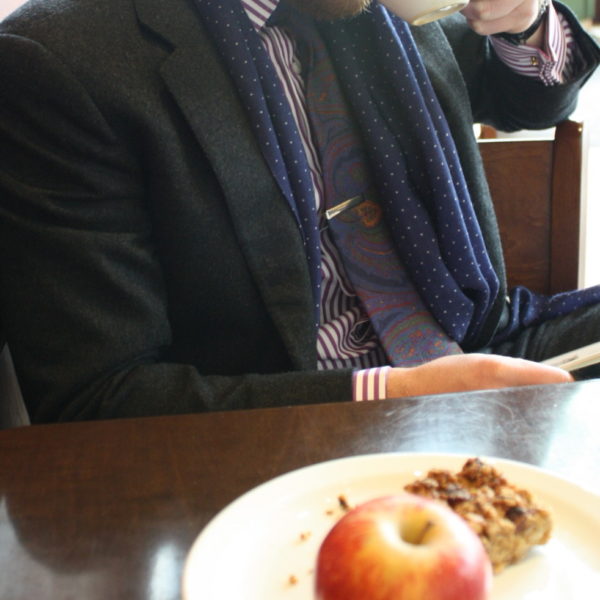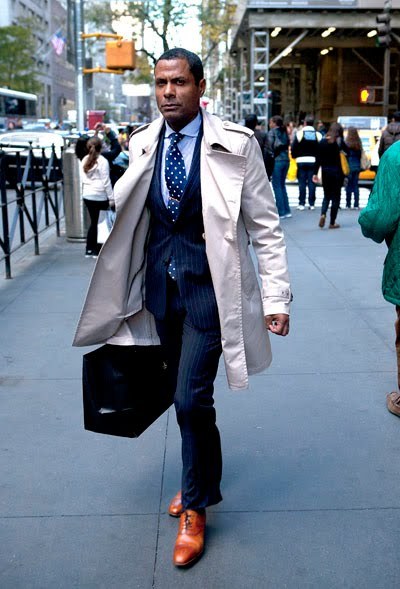
Dressing well means pulling things together that both match and contrast, and in doing so, striking a balance. Basic pattern mixing, for example, should involve varying patterns by type and scale. A striped shirt can sit well behind a bolder striped tie and glen plaid suit, or maybe even a windowpane.
I think there are other dimensions that are worth striking a contrast. A textured tie such as a woven grenadine or silk knit can sit well against the flatness of poplin or smoothness of gabardine. Likewise, a man should consider how he balances between the shine and dullness of his clothes. A lustrous silk tie looks good next to a dry linen pocket square, and a tie in a duller fabric, such as wool or cotton, is perfectly complemented by a shiny pocket square in a printed solid or foulard. Similarly, the gleam of a man’s tie or well polished shoes can act as a good counterbalance to his otherwise matte ensemble.
There are ways of doing this poorly, of course. A satin tie would not go well with a tweed jacket and winter wools shouldn’t be mixed with summer linens. Though you want things to contrast, nothing you wear should stand out on it’s own; everything should harmonize. But that’s why we seek to both match and contrast, and in doing so, we strike a balance.







